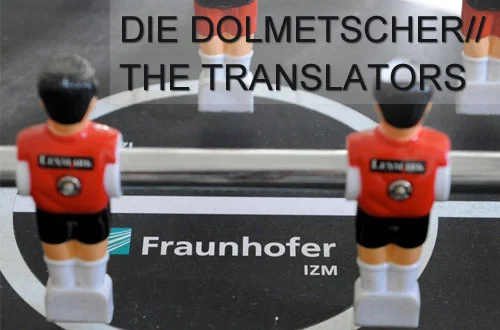The Translators
In 2006, on the initiative and with funds from the Federal Ministry of Education and Research BMBF, six application centres with close ties to research set out with entrepreneurs to explore the possibilities of “translating” scientific findings into products based on microsystem technology. In 2012, funding will stop. However, one of the partners, the Fraunhofer Institute for Reliability and Microintegration IZM, thinks the model to be so interesting that it should be continued, explaine IZM project manager Harald Pötter.
The European technology platform EPoSS concludes: “Smart systems are crucial for the competitive strength of companies and entire sectors of the economy.”
Poetter – I can only give my full support to that. There is virtually no area of our everyday lives that does operate without smart systems. These are embedded, intelligent sensors that not only measure values, but also process them, if necessary sending their findings to a higher level controller,
often by radio. Some can even operate as independent units. One clear trend is to combine smart with measuring systems. As a result, smart systems are becoming an integral constituent of the product and their intelligence is defining its functions to an ever greater extent, boosting the competitive
edge of the providing company.
Where is Germany, where Berlin in the global competition for the research, development and application of smart systems?
Germany has adopted an excellent position. In microsystem technology, we rank among the leading nations. Berlin is the third strongest location for microsystem technology in Germany. In addition, we have a wide front of SMEs providing excellent customised applications and solutions, for instance in mechanical, medical and automotive engineering. This gives us a powerful edge wherever there is potential for smart systems.
There are six of these application centres in Germany. Berlin is operating in the field of smart systems. What are the tasks assigned to these centres?
Each application centre focuses on its own technology. Berlin is concentrating on MST applications in logistics, medical engineering and industrial electronics, yet also in fields that are far from technology in this sense, for instance agricultural engineering, facility management and civil engineering. There is still great potential here. Our task is to introduce this technology to companies that are not yet at home in the field of microsystem technology. As a centre, we are familiar with the depths of this research field and are able to translate its possibilities into the requirements e.g. of a mechanical engineer. We are the mediators between companies and microsystem engineers.
Are SMEs fighting shy of developments in technology or the work with scientific institutes?
Compared with the rest of Europe, SMEs in Germany are highly innovative and open minded, they think over the long term and make decisions quickly. Many initiatives did not come from major companies, but from SMEs.
Your slogan is “Bringing microsystems into application”. How do you set about that?
As a first step, we ask the entrepreneur what application he is targeting and why. We often discover that solutions other than the one targeted may possibly be of interest. Once we’ve marked out the turf, we think about the physical principles and how they can be integrated in the planned application. We discuss this with the company, present the advantages and drawbacks of each approach and consider
a technical solution.
Does the entrepreneur seeking support at the application centre need to have a past history of science?
No. The entrepreneur knows his markets, his applications and his requirements. He must be able to tell us what his ideas are. Their translation into technical reality is then our job.
What’s the time frame from the idea to the product?
Innovation cycles are often longer than you think. On the surface, many talks first come to nothing. Yet they are resumed after one or two years. The idea, so to speak, has matured in the heads of the users. Generally, it takes one to four years. We don’t make any statements on marketability.
That’s for the entrepreneur.
Rico Bigelmann
Internet: www.izm.fraunhofer.de
